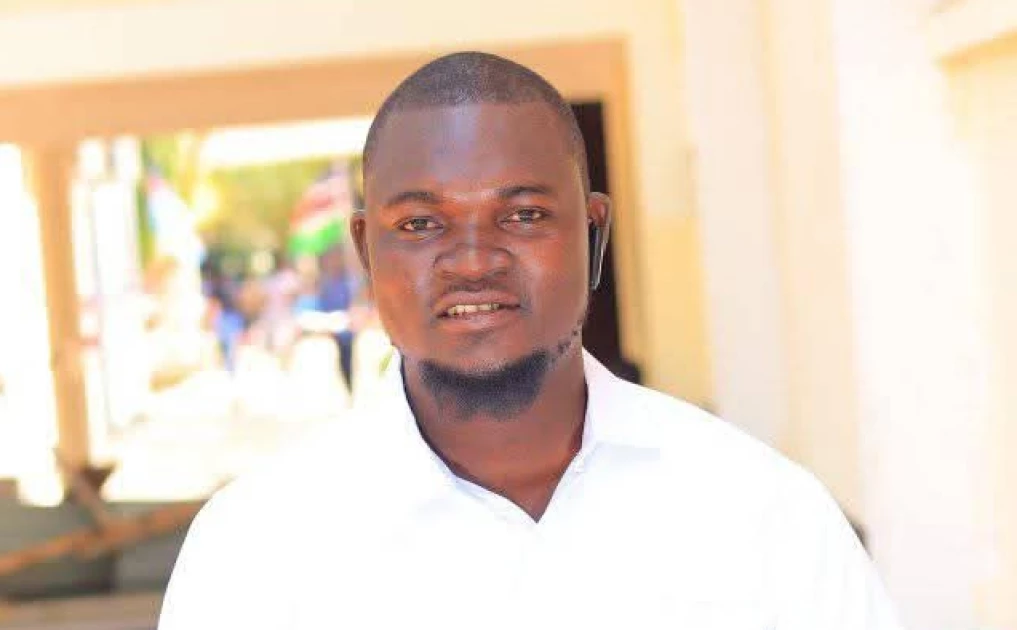“Albert Ojwang’s death and the subsequent unfolding of events carry profound implications for Kenya’s justice system and the broader issue of police accountability.”
The death of Albert Ojwang, a 31-year-old Kenyan blogger and teacher, in police custody has ignited a firestorm of outrage across Kenya, exposing deeply rooted concerns about police brutality and accountability. What began as a seemingly straightforward police report of self-inflicted injuries quickly unraveled into a complex web of conflicting theories, pointing squarely to an alleged assault by those entrusted to uphold the law. The genesis of this tragic saga, its swift developments, the glaring allegations against senior police officers, and the profound implications for Kenya’s justice system demand a thorough and in-depth analytical examination.
Genesis: A Critical Post and a Controversial Arrest
The story of Albert Ojwang’s demise begins with a social media post. Ojwang, known for his critical commentary on political and social issues on platforms like X (formerly Twitter) and Facebook, allegedly posted content critical of Deputy Inspector-General of Police Eliud Lagat. The precise nature of this criticism, beyond accusations of “tarnishing his name,” remains a subject of public speculation, though reports suggest Ojwang had previously written about Lagat’s alleged involvement in a bribery scandal.
This post, seemingly innocuous in a democratic society, became the catalyst for his arrest. Ojwang was apprehended in Homa Bay, a town in western Kenya, on a Friday. What followed was a significant transfer, a journey of over 350 kilometers (220 miles), to the Central Police Station in Nairobi, where he was booked into custody on Saturday. This long-distance transfer for a social media offense immediately raised eyebrows among human rights advocates and the public, suggesting a possible intent beyond routine procedure.
The Initial Narrative and Its Swift Contradiction
Upon his death, the police offered an initial, definitive narrative. They claimed Albert Ojwang was found unconscious in his cell and succumbed to head injuries allegedly sustained from “banging his head against a cell wall.” This explanation was swiftly relayed to the public, seemingly an attempt to close the case with minimal scrutiny.
However, this official account was almost immediately and forcefully challenged. Doctors and independent investigators, including the Independent Policing Oversight Authority (IPOA), refused to accept the police’s version of events.
An autopsy, a critical turning point in the investigation, was conducted by a team of five pathologists, led by state pathologist Dr. Bernard Midia. Their unanimous report delivered a damning refutation of the police’s claims.
The autopsy revealed a grim reality: Albert Ojwang had suffered severe head injuries, neck compression, and multiple soft tissue trauma spread across his head, neck, upper limbs, trunk, and lower limbs. Dr. Midia explicitly stated that the pattern of injuries was inconsistent with self-inflicted wounds from hitting a wall. Instead, the pathologists concluded that the injuries were “externally inflicted” and consistent with “assault,” with clear signs of a struggle. This scientific evidence directly contradicted the police’s narrative, shifting the focus from a tragic accident to a probable homicide within police custody.
Developments: Public Outcry and Presidential Intervention
The revelation from the autopsy report ignited widespread outrage across Kenya. Human rights groups, civil society organizations, and opposition leaders condemned Ojwang’s death, demanding accountability. Protests erupted in Nairobi, with hundreds taking to the streets, blocking roads, setting cars ablaze, and attempting to march on Parliament. Chants of “Lagat must go” and “No justice, no budget” filled the air, reflecting deep-seated frustration with police brutality and a perceived lack of accountability.
The pressure mounted quickly on the authorities. Inspector-General of Police Douglas Kanja, in a significant shift, retracted the initial police statement and publicly apologized for what he termed “misinformation” from his juniors. President William Ruto, initially urging caution, later acknowledged that Ojwang had died “at the hands of the police,” a direct reversal of the earlier official stance. He pledged a “swift, transparent, and credible” investigation, promising to “protect citizens from rogue police officers.” This presidential intervention, while welcomed by many, also highlighted the gravity of the situation and the perceived failure of internal police mechanisms to address such incidents.
Allegations and the Implication of a Senior Police Officer
The investigation, led by the IPOA, swiftly moved to identify those responsible. Preliminary findings from the IPOA not only ruled out suicide but also revealed that the CCTV systems at the Central Police Station had been interfered with, suggesting a deliberate attempt to cover up what transpired.
The most significant development, and one that directly implicates senior police officers, has been the arrests. Officer Commanding Station (OCS) Samson Talam, the head of the Central Police Station where Ojwang died, has been detained. Alongside him, Constable James Mukhwana has been taken into custody. Court papers submitted by detectives allege that PC Mukhwana and “other suspects at large” were “likely involved in the planning and execution” of Ojwang’s killing, including tampering with CCTV to obscure evidence. Furthermore, a technician suspected of disabling the surveillance system has also been arrested.
The focus on Deputy Inspector-General of Police Eliud Lagat remains central to the allegations. Ojwang’s initial arrest stemmed from a post critical of Lagat. While Lagat himself has not been arrested, the public and various groups are demanding his resignation or suspension, arguing that his alleged involvement in the circumstances leading to Ojwang’s detention, combined with the subsequent death in custody at a station under his command, necessitates his stepping aside for a truly independent investigation. The public sentiment is clear: the chain of command must be scrutinized, and those at higher levels of authority must be held responsible if their actions or inaction contributed to this tragedy.
Implications for Kenya’s Justice System
Albert Ojwang’s death and the subsequent unfolding of events carry profound implications for Kenya’s justice system and the broader issue of police accountability.
Firstly, it has reignited and intensified long-standing concerns about police brutality and extrajudicial killings. Rights groups consistently report high numbers of deaths in police custody and enforced disappearances. The IPOA itself has reported 20 deaths in police custody in just the past four months, underscoring a systemic problem. Ojwang’s case, particularly due to the clear medical evidence contradicting official police claims and the direct implication of senior officers, has become a potent symbol of this ongoing crisis.
Secondly, the case highlights the critical role of independent oversight bodies like the IPOA. Their swift and decisive intervention, especially in contradicting the initial police report and initiating a thorough investigation, has been instrumental in ensuring a degree of transparency and public trust that would otherwise be absent. However, the true test of their effectiveness will lie in their ability to secure convictions and hold all perpetrators, regardless of rank, accountable.
Thirdly, the public outcry and protests underscore the power of citizen activism and media scrutiny in demanding justice. The consistent pressure from human rights organizations, opposition figures, and the public has forced the government and police to retract false statements and take concrete action, demonstrating that unchecked power will be met with resistance.
Finally, the incident poses a significant challenge to President William Ruto’s administration. He came into power pledging to end police brutality and extrajudicial deaths. Ojwang’s death under such circumstances, with a senior officer facing allegations, puts his commitment to the test. His promise to “protect citizens from rogue police officers” must translate into tangible reforms and a robust legal process that ensures justice for Albert Ojwang and sends a clear message that such abuses will not be tolerated. The credibility of his administration on human rights issues is now under intense international and domestic scrutiny.
The question of “Who killed Albert Ojwang?” is gradually being answered, not by the initial self-serving police narrative, but by forensic evidence and ongoing investigations pointing to a brutal assault within the confines of a police cell. The contradicting theories that initially clouded the truth have been dispelled, revealing a disturbing picture of alleged police misconduct and a systematic attempt at cover-up. The saga is far from over, but the developments thus far have laid bare the urgent need for comprehensive police reform and unwavering commitment to justice in Kenya.

